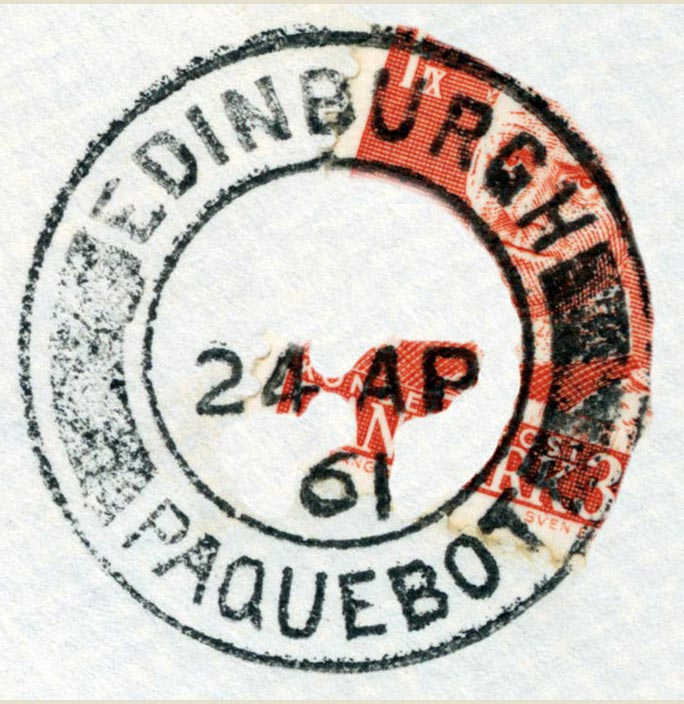
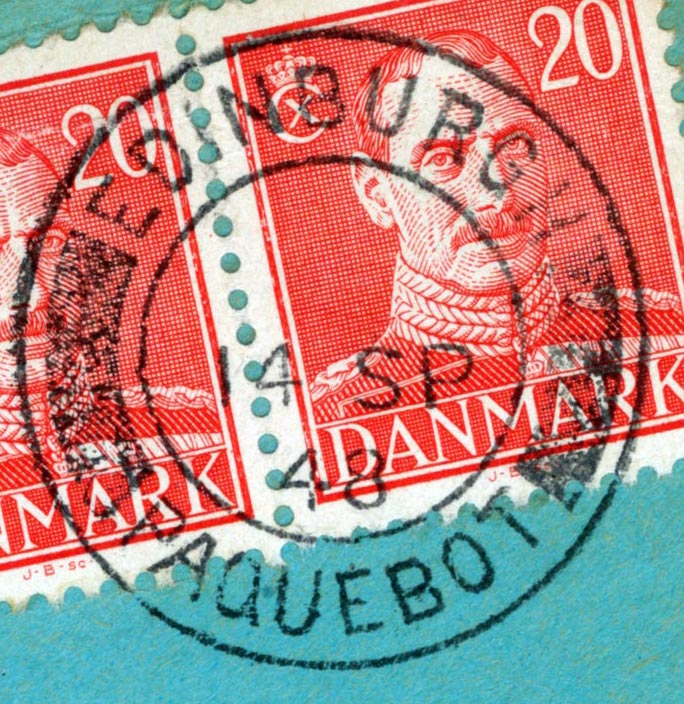
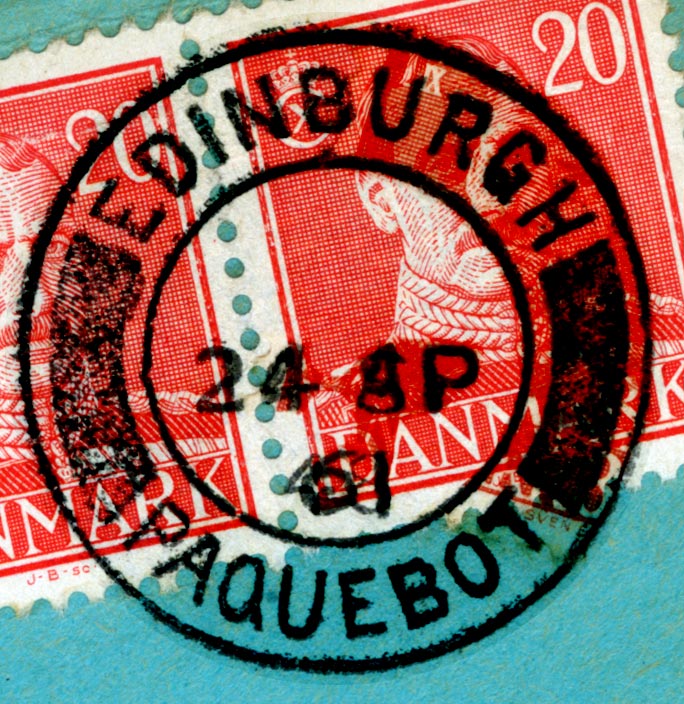
Thanks to other Faroes enthusiasts on the Internet, I've been able to answer questions I had about some of my covers. This page has my original questions and what I've learned about them...
Please click on any of the following images for a larger version
The first two are scans of the Edinburgh SK48 type (from DAKA GF10 2000 edition) Paquebot cancel from commercial covers in my collection. DAKA lists these as SK48 (used "19481126 to xx") and SK49 (used "19761211 to 19790430"). I digitally edited out parts of the stamp from the left image to make an overlay cleaner.
The third image is an overlay in Photoshop of the two images. The dimensions of the cancel match exactly (except for the different date; and even there the "4" and "P" match up). Another point of interest is if you compare the left portion of the inner circles of the original images, you'll see two notches in the same locations on both of them.
Comparing the SK48/SK49 images in DAKA, it does look like SK49 has more space between the lettering and bars and the inner and outer circles but that could just be the inking on the examples used for the illustrations. P>At the very least, the 14 Sep 1948 is an earlier use of SK48 and the 24 Apr 1961 is a later use of SK48 with SK49 being a different cancel. Or SK48 and SK49 are actually the same cancels and should be combined in the catalog listing.
Hosking's book "Paquebot Cancellations of the World" (2000 edition), shows this cancel being used from 1938-1996, scarcity A, with no change in the cancel. So it appears likely that DAKA is incorrect and there is but a single cancel type used over a very long period of time.
As a result of this research, DAKA GF10 2010 edition now lists these as a single entry SK48 (SK49 has been deleted and will remain unused in the future to prevent potential confusion).
Please visit the page I have written on this fascinating cover.
Following is a scan of the date portion of a Skyds letter I have from "L Wejke" to foreman P. Østeroe in Tvøroyri:

Does anyone know where this is from? I'm guessing this is either Vagur or from the island of Vagar but I'm not sure which.
Answer: Steen Jack Petersen confirms that this is from Boe, Vagar.
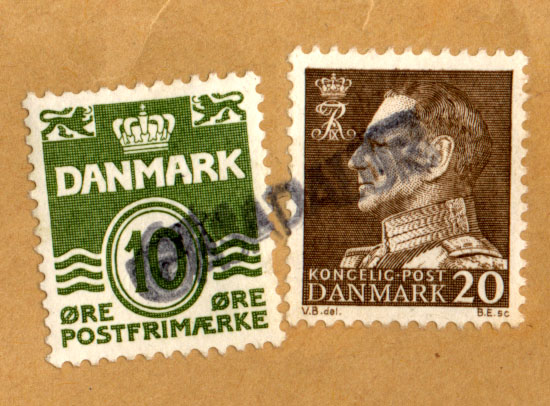
This cover from an unknown date (probably early 1960s based on the stamps used) was sent from Gasadalur (an unconnected village on Vagar until a recent tunnel was made in the 90s) with what looks like a handstamp Gasadalur cancel (no accompanying dates or arrival stamps). It was sent from Byggjar Soknar Kommuna, Gasadalur to Kommunalaeknar, Midvagur. This cancel isn't listed in my Daka Faroe Islands catalog.
Question: What is this cancel? Is this a rare item?
Answer: Steen Jack Petersen replied that "Yes, it is a rare cancel but the cancel should not be used on the mail. A lot of cancels have been used unauthorized."
Anyone else know anything about this cancel?

My DAKA GF10 2000 catalog indicates that the last year of use for the DK15 cancel is 1968, yet this cover is from well into 1969 (yes, it is 1969, not 1960). The Fra Faeroerne cancel measures 38 mm, consistent with DK15 -- the similar-looking DK10a cancel was used in 1969 but measures 36.5 mm according to DAKA so this does appear to be a DK15...
Question: Is this a last-known use or at least past the catalog date?
Answer: Yes, it appears to be a later use than previously known. Now that DAKA has a new publisher (Thomas Høiland), I will need to send them a scan...

Similar to some of the Fra Faeroerne ships mail cancels on Danish and Icelandic stamps discussed on www.faroestampsite.com, I have one on a Swedish stamp.
Question: Is this a mistaken application of the Fra Faeroerne cancel?
Answer: Per Knudsen replied that, "FRA FAEROERNE was frequently misused, like FRA SVERIGE, which I have seen on Faroese letters. Interesting, but with no special value..."
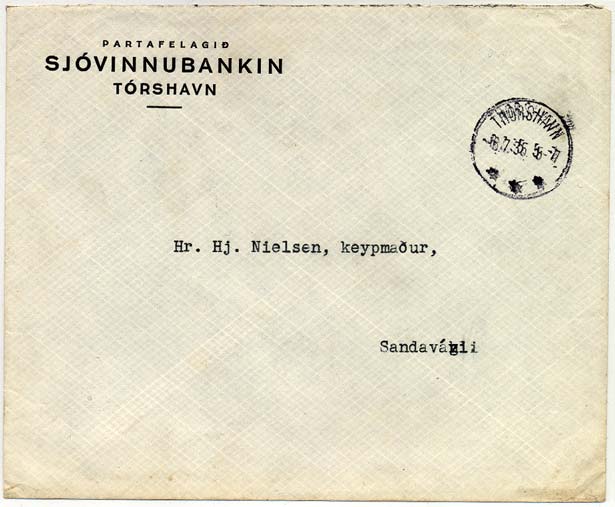
This cover from Sjovinnubankin in Torshavn has a 6.7.35 cancel but no stamp or indication of rate paid. The back is free of any additional postal markings.
Question: Does anyone know why there isn't a stamp?
Answer: Per Knudsen replied that, "This cover from the period between the wars is not rare, but still interesting. Those examples I have seen are, like yours, most possibly one of a large bundle of bank statements (Pr June 30th!) delivered without stamps and paid for in cash."
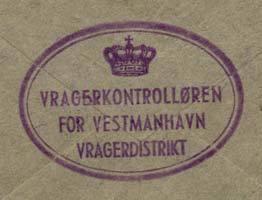
On the back of this cover from Vestmanna is what looks like some type of seal on the back.
Question: Is it security related or is it merely the return address of the sender? (What was/is the "Vragerdistrikt"?)
Answer: Per Knudsen replied that "VRAGER is/was the danish title of an official controller of the fish-deliveries in the harbours. This is his official "seal", OK, but only used at this envelope as a return address, just as all private companies did, when they had no preprinted covers with return address..."
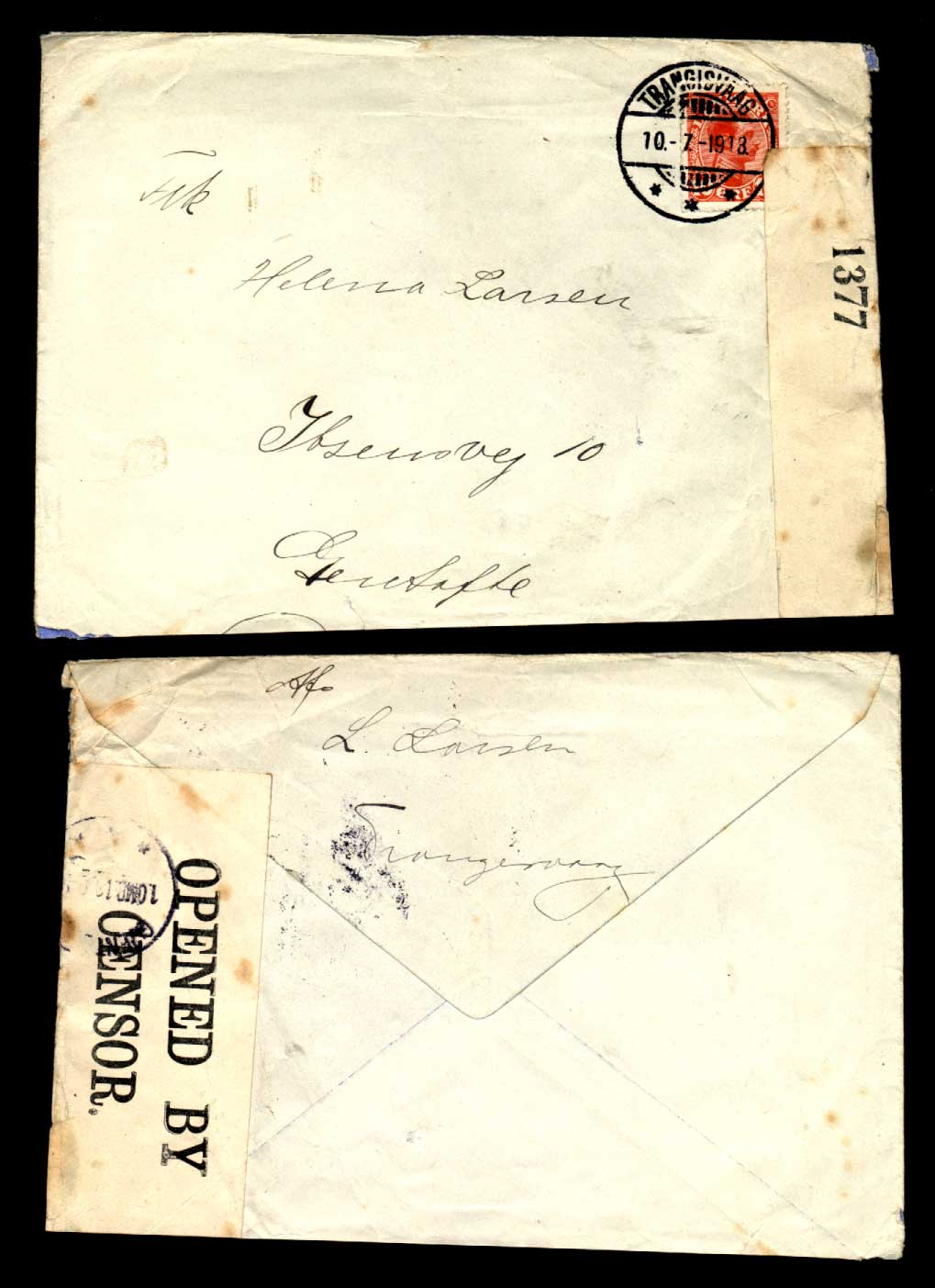
This Tvoroyri cover from 1918 was sent during WWI during which Denmark stayed neutral.
Question: Why then does this cover have a presumably British censorship label when it was "merely" going from the Faroes to Denmark? Did it have to go through Great Britain on the way?
Answer: Steen Jack Petersen replied that "before WW2 a lot of ships were sailing from Copenhagen to GB and afterwards to Faroe Islands and/or Iceland. The mail that passed through GB was censored".
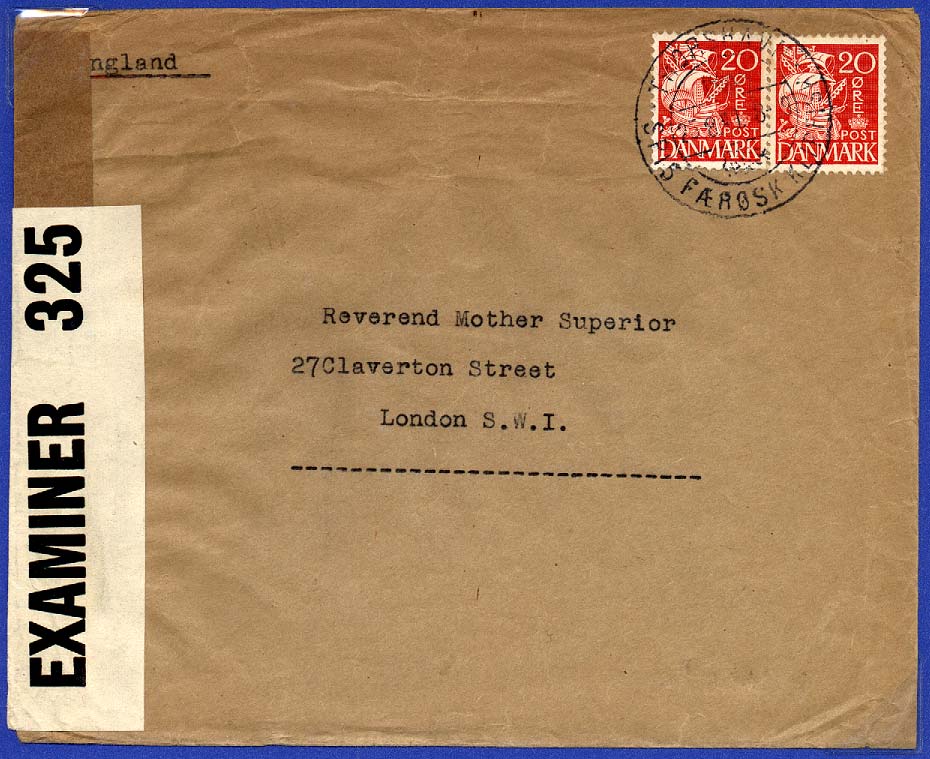
My DAKA catalog also indicates that the 20 ore stamps did not arrive in the Faroes until Sep 1941, before which the provisionals were used. This cover was sent 25 Aug 1941.
Question: Was this cover sent before the post-provisional supply of new 20 ore stamps arrived or not?
Answer: DAKA appears to be incorrect. Information about the timing of availability of the 20 ore is available in Kristian Hopballe's book "Faeroernes postale forhold under anden verdenskrig."
Copyright ©2003-2011 Geoffrey Noer. All rights reserved.
Last update: 4 Jul 2011 by noer at noer.com